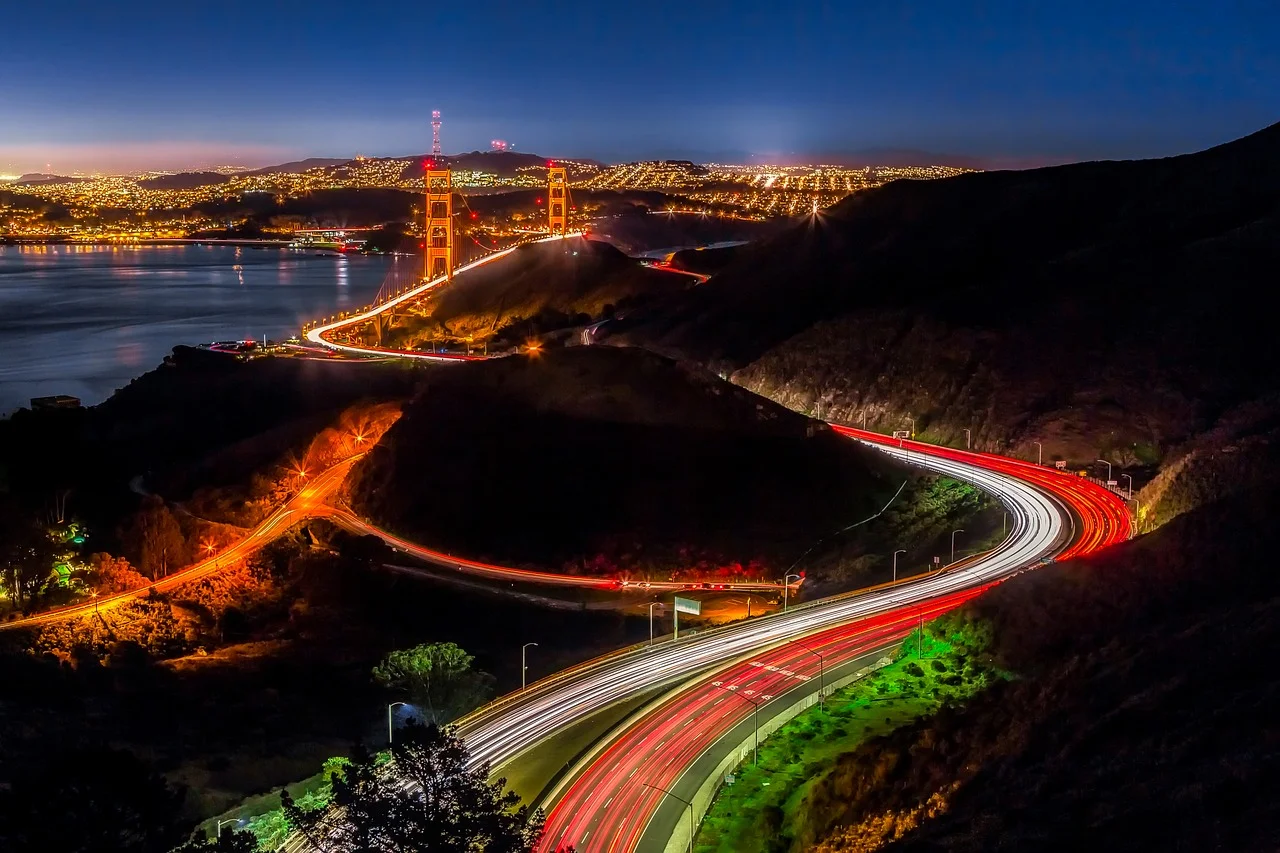If you think about a contender to be one of the most famous bridges in the world, then this one probably makes the top of your list.
In this post, you’ll discover the ultimate list of facts about the Golden Gate Bridge, the internationally recognized symbol of San Francisco in California!
1. It spans the strait after which it was named
The Golden Gate Bridge connects the northern part of the San Francisco Peninsula with Marin County. It does so by spanning the so-called “Golden gate,” a strait with a width of about 1 mile (1.6 kilometers) and connects San Francisco Bay with the Pacific Ocean.
The bridge has been declared a San Francisco and California Historical Landmark and has been chosen as one of the 7 modern wonders of the world by the American Society of Civil Engineers.
There’s hardly a more iconic bridge in California, that’s for sure, even though the Bay Bridge nearby comes close!
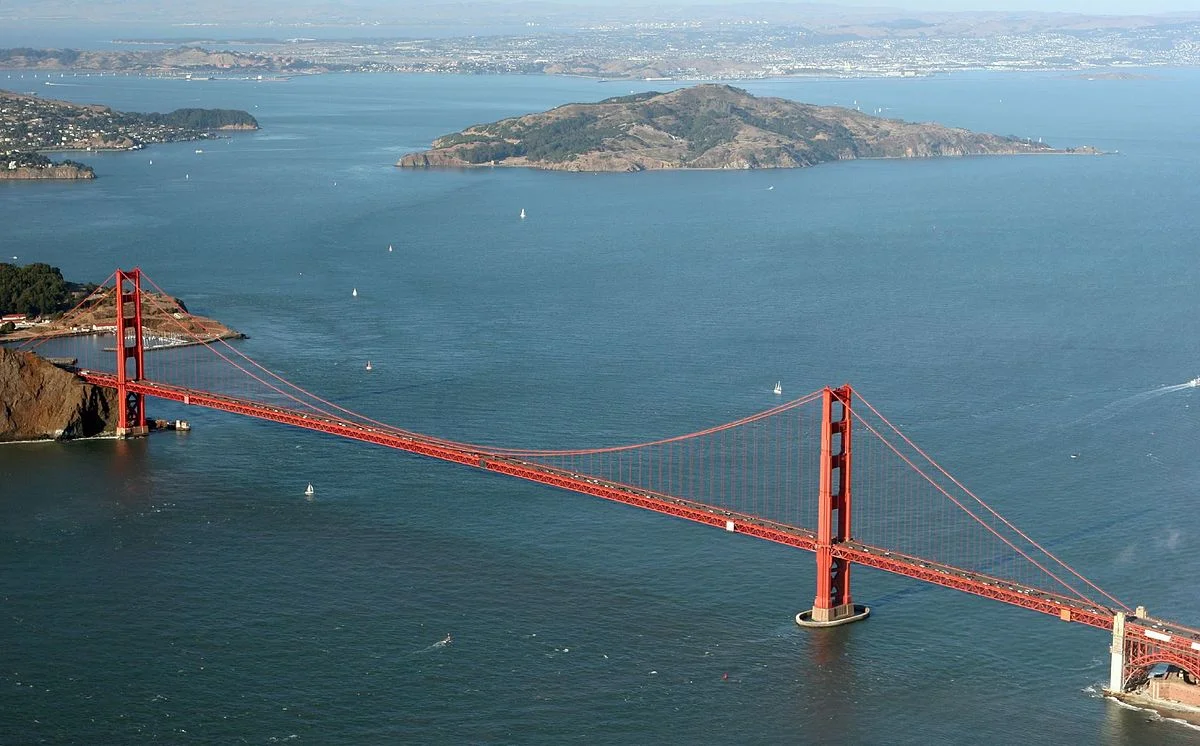
2. It held some remarkable records upon completion
One of the most fascinating facts about the Golden Gate Bridge is that nobody deemed it possible that a bridge could be built across the Golden Gate in the early 20th century.
After all, the strait is over 1 mile long (1.6 Kilometers), the water is about 372 feet (113 meters) deep, and the water is prone to powerful tides and currents.
That’s why some records had to be shattered to make it happen. Upon completion, the bridge had the longest span in the world with 4,200 feet (1,280.2 meters) and it was the highest bridge in the world as well with the towers standing 746 feet (227.4 meters) above the water.

3. Only 1 bridge in the United States has a longer span at the moment
At the moment, only one bridge has surpassed the longest span of the Golden Gate Bridge in the United States. That’s the Verrazzano-Narrows Bridge which connects Brooklyn with Staten Island in New York City.
As of writing this article (December 2020), the bridge still has the 17th longest span in the world.
The height of the towers was only surpassed in the year 1993 by the Mezcala Bridge in Mexico, which was in turn surpassed in height by the Akashi-Kaikyo Bridge in Japan in 1998.
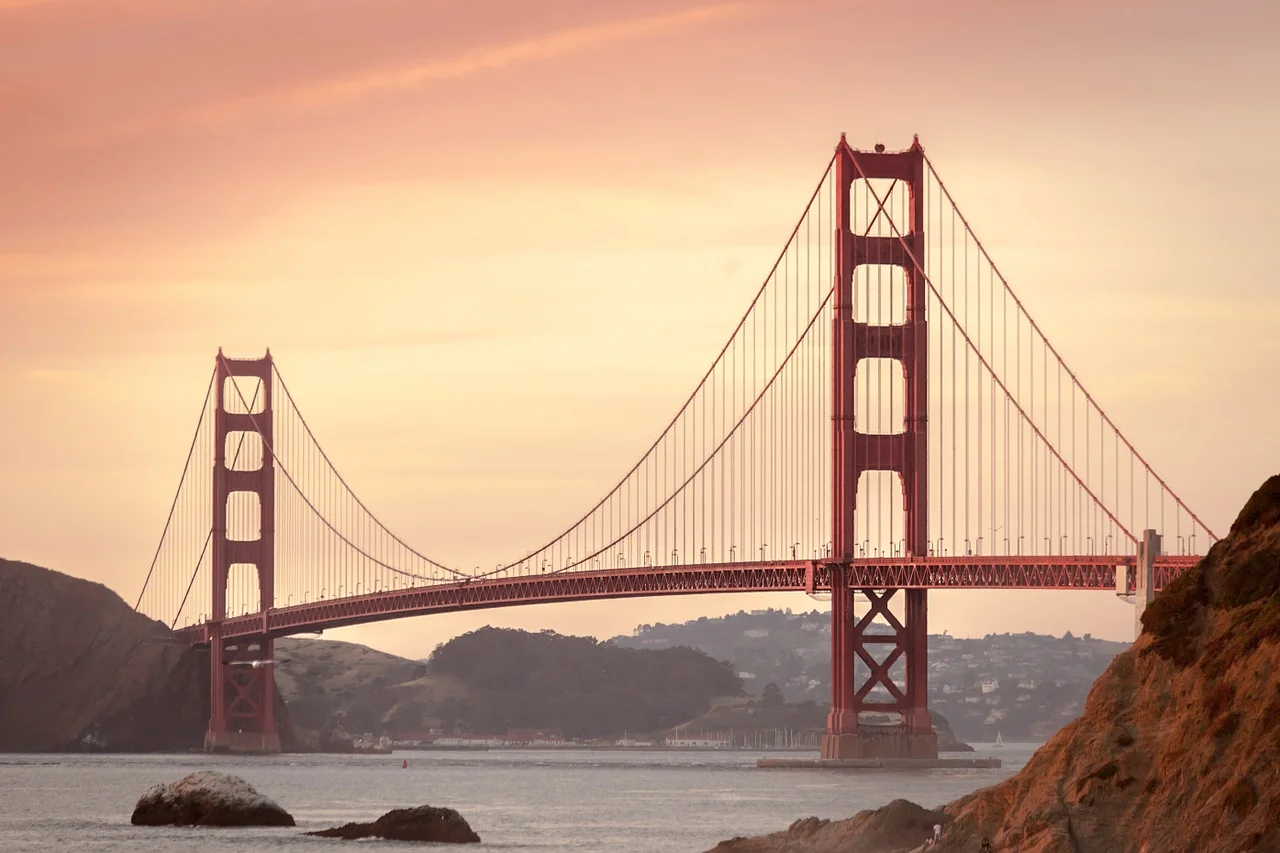
4. The bridge killed a popular business after it opened
Back in the first decades of the 20th century, San Francisco was the only city in the United States which still solely relied on ferries to bring people from San Francisco to the neighboring counties.
The first ferries started operation in the 1820s and the Sausalito Land and Ferry Company service eventually became the largest ferry operator in the world in the early 1920s.
A magnificent Beaux-Arts style building to support this ferry business was opened in 1898 called the “San Francisco Ferry Building,” but the booming business would eventually be killed when the bridge opened nearly 4 decades later.
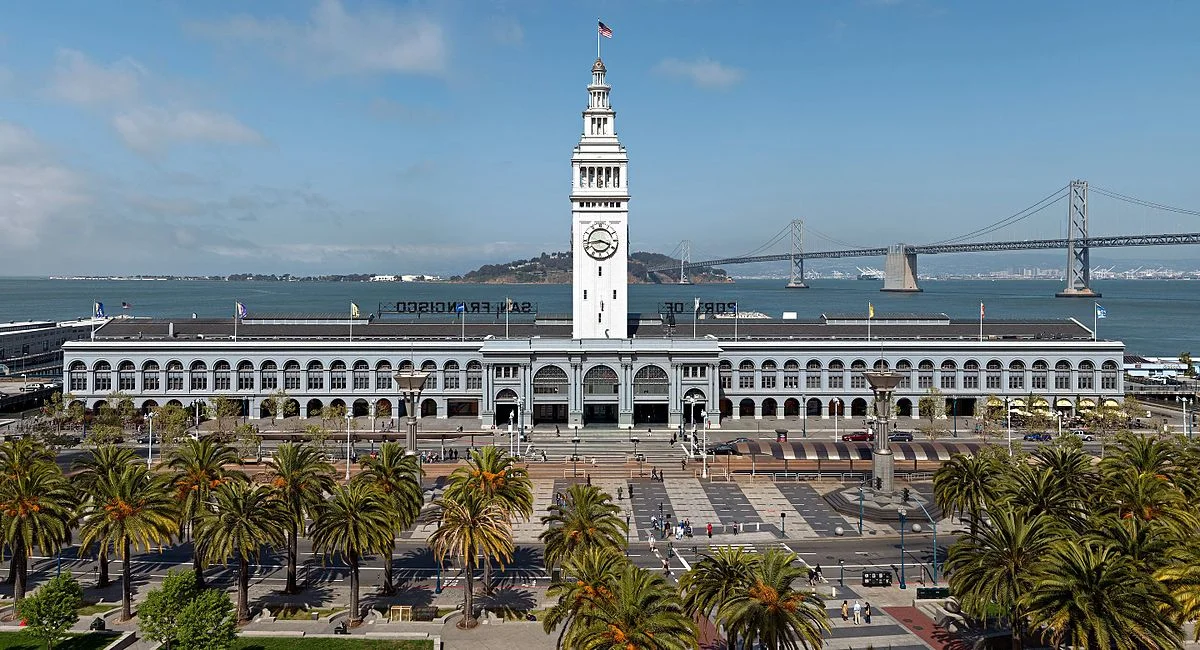
5. The engineer of the bridge faced problems for over a decade
It wasn’t until the year 1916 that a serious attempt to find a suitable design was taken when an article was published in the “San Francisco Bulletin.”
One ambitious engineer named Joseph Strauss replied with a drawing of 2 cantilevers on each side of the strait which were connected with a central suspension element. This was to cost about USD 17 million, a massive amount back then, equivalent to over USD 400 million today!
Even though this design was unpractical and aesthetically unappealing, the idea to build a suspension bridge was born, even though it faced opposition from many parties, including the ferry businesses who filed multiple lawsuits to prevent it from being built.
A statue of Joseph Strauss can be found near the Golden Gate Bridge to commemorate the man who made the initial design.

6. Another engineer did not get credit for his work on the bridge
Strauss, who only had experience with drawbridges and who ended up revolutionizing bascule bridges, dedicated most of his time to creating the perfect design and support for it.
Because of his lack of experience, he received help from multiple other engineers and designers, including Leon Moisseiff, the engineer of the Manhattan Bridge in New York City. He managed to perfect the suspension element of the bridge
The main contribution of the bridge can be credited to Charles Alton Ellis who worked together with Moisseiff. Even though Strauss did whatever he could to discredit his contribution, Ellis is now considered to be the principal engineer of the project, a title he was eventually awarded in May 2007.
7. Raising the funds for construction wasn’t easy in the late 1920s
The Roaring Twenties were a fascinating period in history. A lot of innovations were made and magnificent skyscrapers were built all across the United States, including some of the tallest in the world such as the Chrysler Building and the Empire State Building.
Then, everything came crashing down in October 1929, the month of the stock market crash on Wall Street.
Unfortunately for the company that was created to raise funds for the bridge’s construction, the Golden Gate Bridge and Highway District, was incorporated just a year earlier in 1928.
The company was eventually able to sell bonds they issued worth USD 30 million. A construction budget of USD 27 million (about USD 415 million today) was approved.
The bridge would end up costing about USD 35 million at the time, the equivalent of USD 525 million today!
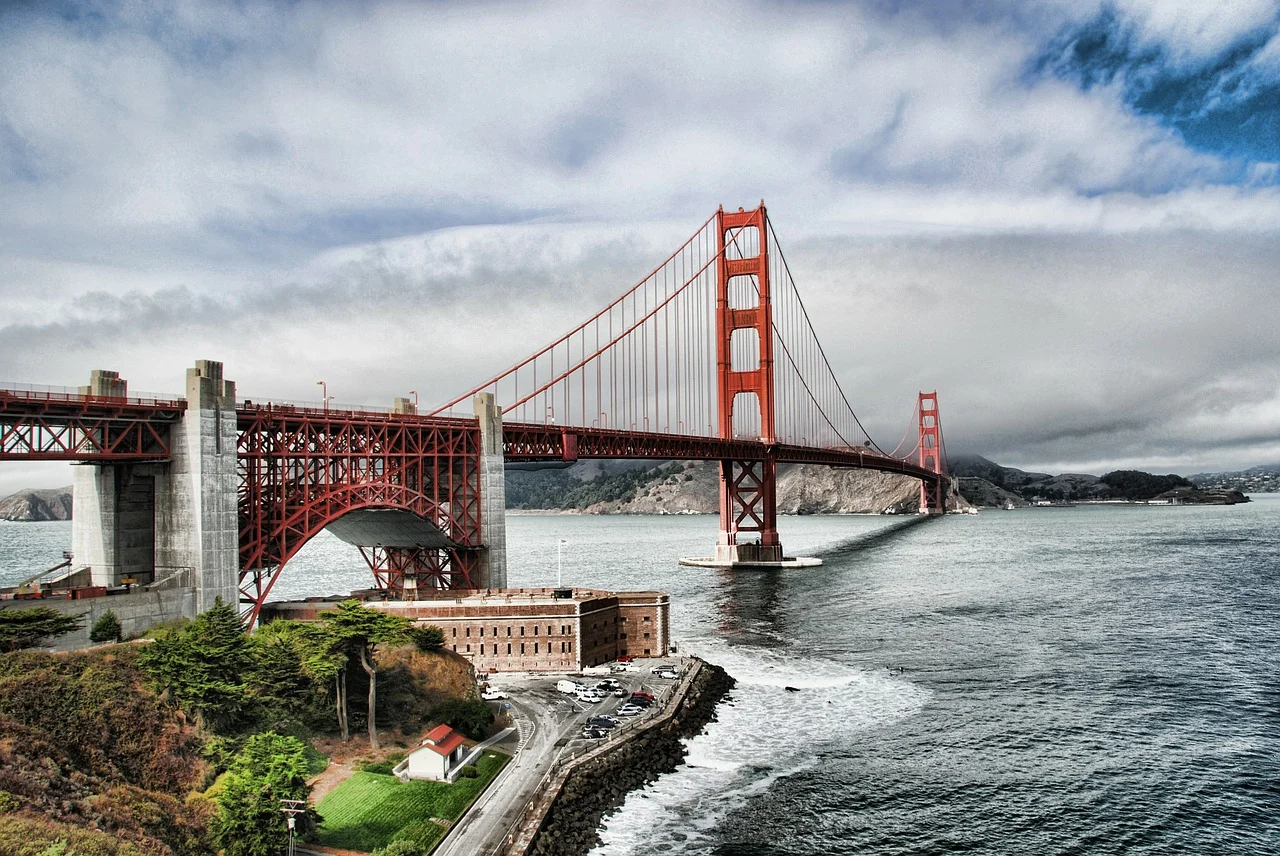
8. The safety net used during construction saved a lot of lives
The construction of the Golden Gate Bridge was an extremely dangerous endeavor. There was a constant risk of construction workers falling off the bridge and plunging to their deaths about 200 feet (61 meters) lower into the freezing water.
Unfortunately, 11 people lost their lives during the construction phase in 2 separate incidents. The worst incident happened on February 17, 1937, when the bridge was almost completed. A safety net snapped under the weight of a scaffold that had fallen into it and 10 people lost their lives when they were dragged along with it.
Luckily, the safety net also saved 19 lives. This group of people would later form the “Half Way to Hell Club.”
9. The Golden Gate Bridge opened for traffic in the year 1937
The construction of the bridge started on January 5, 1933, and lasted until April 19, 1937. It wasn’t until May 27, 1937, that the Golden Gate Bridge finally opened for vehicles, bicycles, and pedestrian traffic.
The bridge has a total of 6 lanes and it’s estimated that on average, about 112,000 vehicles cross the bridge every day!
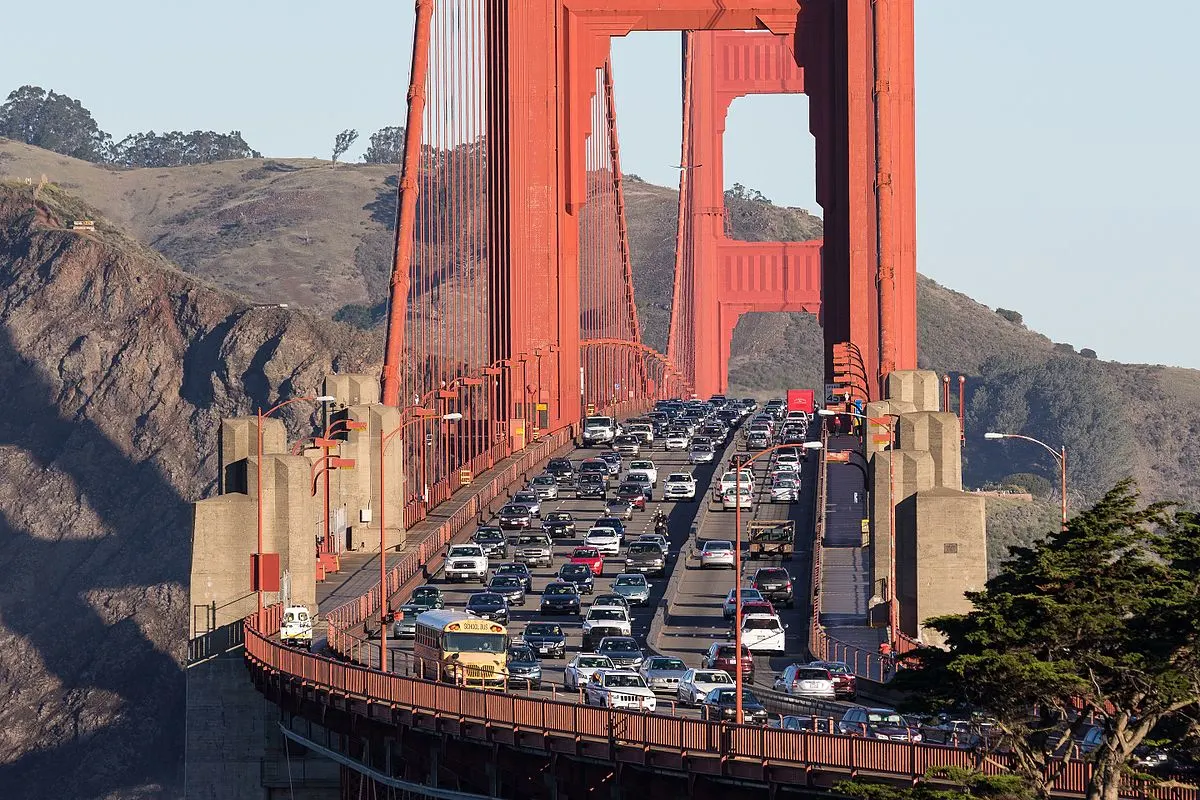
10. The bridge doesn’t have its original deck anymore
The original deck was completely made out of concrete, but the salt brought from the fog and winds had seriously deteriorated the deck in the early 1980s.
A renovation project was conducted between 1982 and 1986 which replaced the concrete deck with steel orthotropic deck panels. This was done in 747 sections which resulted in the deck weighing about 40% less than the original.
The total cost for this renovation was about USD 68 million and it was ready for the 50th anniversary of the bridge in 1987!
11. The towers of the bridge are held together with 1.2 million rivets
The bridge featured the tallest towers of any bridge in the world from 1937 until 1993. They stand 746 feet (227.4 meters) above the water below, even though the clearance below the deck is about 220 feet (67.1 meters) at high tide.
One of the most amazing facts about the Golden Gate Bridge is that both towers are held together with a total of 1.2 million rivets, 600,000 rivets each.
The incredible height of the towers is needed to allow the massive cables of the bridge to carry the weight. These cables consist of 27,572 strands of wire each and are combined an estimated 80,000 miles (130,000 kilometers) long!

12. It’s a popular tourist attraction and looks amazing at night
Saying that the Golden Gate Bridge is one of the most iconic landmarks in the world certainly does the structure justice. That’s why it has also become one of the most popular tourist attractions in the San Francisco area, together with the island of Alcatraz just to the east of it.
The Golden Gate Bridge Welcome Center, located on the San Francisco side of the Bridge, opened its doors in 2012, the year that the bridge turned 75.
While the bridge looks certainly amazing during the daytime, offering visitors countless opportunities to capture one of the most picturesque sights in the world, the bridge looks even more astounding at night, especially with the San Francisco skyline in the background!
